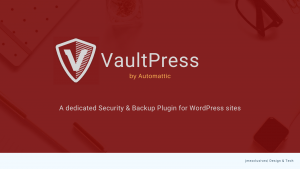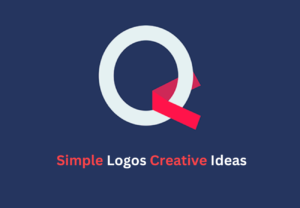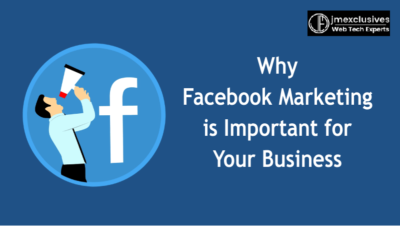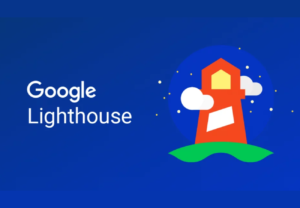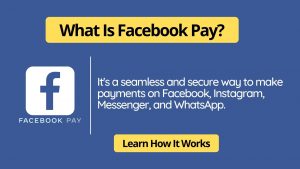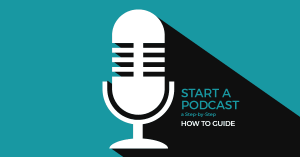SaaS Lead Generation is a competitive grey area, but it can still pay off even if you don’t have a giant budget like Microsoft or Netflix. As a marketer, you can use social proof in your B2B marketing and lead generation to get many positive customer reviews. You can collect reviews on your website, but third-party online review websites like G2 and Capterra are also incredibly persuasive to buyers.
Just ensure to include reviews as part of your outreach to existing customers. Afterward, follow up after a customer has a positive support experience to ask them to review your software. You may be allowed to offer incentives for reviews, but some website platform builders and CMS Applications like WordPress.org don’t allow this. Check each website’s terms and conditions to be sure.
In most cases, as a business owner or webmaster, your software may give your clients solutions to their problems and save valuable time. But they will not learn about it if you don’t contact them. This is where lead generation takes place. A worthwhile lead generation strategy acts as a tool for publicizing your application software to a vast market that can, in turn, translate into possible purchasers.
Nevertheless, achieving a competitive advantage can be tricky since many technology companies fight for your buyer audience’s attention. So, an exceptional strategy that guarantees Return On Investment (ROI) is essential for attracting potential customers’ attention. Be that as it may, this resourceful guideline will teach you everything about a successful SaaS Lead Generation strategy.
Understand What The B2B SaaS Lead Generation Entails In Business Marketing
In most cases, a B2B SaaS Lead Generation strategy often works by convincing website visitors to sign up for a free software trial and then converting them to paid customers. While on the free trial, leads may contact an account manager or other sales and support staff to ensure a good experience. At the same time, a B2B Lead Generation plan seeks to reach the decision-makers in a company.
Technically, Lead Generation is the process of bringing in qualified potential customers and getting them interested in your product. On that note, the B2B Lead Generation process tends to be based on education and building trust. This differs from B2C lead generation, which often relies on emotional appeals. But we can often combine the two to accelerate our lead generation processes.
Of course, a strategic B2B SaaS Lead Generation plan may sound like alphabet soup, but we can explore each piece separately. On the one hand, B2B stands for “Business-to-Business” transaction. In this case, Business-to-Business (B2B) means your company sells to other business owners rather than directly to consumers. On the other hand, the term ‘SaaS’ stands for ‘Software-as-a-Service.’
In a Software-as-a-Service (SaaS) solution, your company hosts the software rather than downloaded and installed by the business that buys it from you. SaaS is typically delivered as recurring subscription plans, though one-time payment models exist. On that note, B2B SaaS (together) refers to cloud-based software systems or applications most digital and online web-based businesses use.
Some notable examples:
- Trello (task management software system)
- QuickBooks (accounting application system)
- Hubspot CRM (customer relationship management)
- Mailchimp (email service provider or ESP)
However, not every B2B service solutions company offers SaaS products. For example, a B2B brand might sell physical office supplies or direct services to other businesses. Similarly, not every SaaS company sells B2B services. For instance, You Need a Budget, and Spotify are cloud-based software systems or applications marketed directly to consumers rather than to other B2B businesses.
The Simple Strategies To Maximize Your B2B SaaS Lead Generation Results
One of the best B2B SaaS lead generation approaches is to educate, build trust, and cultivate personal relationships. B2B SaaS Leads are knowledgeable and often do a lot of research before buying. They’re responsible for purchasing software that the entire company environment will likely use, so there’s a lot at stake. They are far less likely to make an impulse purchase than regular consumers.
Next on the table is the referral marketing program, whereby you ask current customers to refer their peers to your software and give them some incentive. Perhaps the most famous example is Dropbox’s viral marketing campaign offering extra storage space for existing and new customers. This was a genius move because the incentive made the product even more valuable to the user.
Some accessible platforms for affiliate marketing may also offer other referral incentives for SaaS companies. This may include unlocking premium features, increasing usage volume, or adding free usage time to a paid subscription. Remember, even if your referral campaign doesn’t go viral, you can use word-of-mouth and other traditional marketing techniques to help generate leads.
Referrals are considered warm leads, so you’ll generally have higher conversion rates. Because the new leads heard about you from someone they already know who works in a similar industry or role, they’re more likely to be your ideal customer. You also gain an edge in building trust and personal relationships with these new B2B leads. With that in mind, below are the other vital strategies:
1. Working With A Lead Generation Partner
By entrusting individual lead generation assignments to a specialist such as MyOutreach, one’s results are multiplied through utilizing a broad range of tools, experience, and resources. Seek a partner who has generated quality leads from various sources in software companies like yours. Ensure that someone gives you detailed case studies and people you can talk to.
Provide a customized multi-touchpoint strategy proposal explaining your target personas, goals, and ideal customer profiles. Good partners are always open concerning costs; as such, the cost of their services can easily be measured as key performance indicators in tracking return on investment. Working with the right partner means enjoying other people’s skills, ideas, and resources.
It enables you to do something without much investment costs. With this approach across content, paid media, and sales development, they will surely pump up your pipeline. Setting SMART goals is a roadmap for your lead generation efforts, guiding you to success with purpose and clarity. Objectives help focus on specific, measurable, achievable, relevant, and time-bound goals.
This makes them the perfect recipe for a winning strategy. Having the insight to know what you want to accomplish, rather than vague aspirations like “get more leads,” can be an excellent way to achieve your desired outcome. Dive into figures concerning the target audience, the leads you aim to generate, and what you want them to do after they convert to potential paying customers.
2. Defining Your Buyer Personas In Depth
Carefully find out your perfect customer profiles or buyer’s personas. Analyze both qualitative and quantitative data. Collect data from your current customers, prospects, visits, sales exchanges, and marketing replies. In this way, one can know how and why each type of buyer is inspired. Identify their population characteristics, business activities, jobs, pains, objectives, budget levels, and tastes.
By understanding these details, you can tailor your messaging, content, and marketing campaigns to your target audience’s needs and preferences. Having well-defined marketing personas enables you to better align your lead generation strategies with the needs and motivations of the target audience, resulting in more qualified leads and increased chances of conversions.
Regularly reviewing and updating your personas based on feedback and data can ensure that marketing efforts stay relevant and effective in generating leads for the SaaS business. Provide a vivid description of every person’s name, job title, and the challenges they likely face in their regular jobs. Create infographics and virtual images of your frequent and profitable customers’ stereotypes.
How big is their firm? And what industry? Estimate typical deal sizes. Describe their favorite means of communication, buying tendencies, and technology evaluation procedures. What would be their value in the lifetimes of an average customer? This enables an effective target of messages regarding what will most apply to different personalities.
3. Prioritizing Target Audiences Strategically
Understand your goals, business resources, and the sales cycle. Based on buyer personas, decide who to prioritize in initial and subsequent targeted outreach. Consider variables such as the average deal size, purchase intent indicators, and the time it takes to convert them to customers. Focusing lead generation on just two or three of the highest-value leads to drive short-term results.
Also, providing long-term prospects should be emphasized rather than spreading resources thin. Most of your prospects will fall out of the pipeline at some point or another. Whether they decided against making a purchase or they decided to go with a competitor, you’ll inevitably have a percentage of leads that don’t turn into a yes and might never get a definitive ‘no.’ But all is not lost.
Revisit your goals every three months depending on the state of affairs in the marketplace, the changing needs of your clients, and anything else you deem essential at the time. You can effectively qualify leads by using suitable lasers and identifying potential buyers with high purchase intent for a solution matching your offerings.
Ultimately, to be successful in SaaS marketing, you’ve got to choose your channels wisely. Remember, you’re marketing to business decision-makers, so you’re probably not going to reach your target audience on platforms like Snapchat and TikTok. Tools like Linked Helper can enhance your efforts by automating tasks with targeted connection requests and personalized outreach messages.
4. Developing Engaging Multi-Channel Content
Having identified your target audience, it will now be necessary for you to develop a continuous flow of educative and informative material. Ensure that the content genuinely speaks about your software being the solution for those customers in all contacts with them. Develop long-form blog posts, ebooks, webinars, tweets, videos, and infographics explicitly designed for each persona.
Combine different formats, like long-form guides or case studies, complemented with bite-size social posts. Blogs have come full circle. They were all the rage in the 90s and quickly became ‘uncool’ shortly after. Today, it seems everyone has a blog on their website. In business blogging, you’ve got to go beyond just hashing out low-quality articles and publishing semi-regularly.
Focus on your personas’ researched materials, such as joint problems, tips, industry practices, and tangible benefits that will impact their lives. Use a conversational, clear tone. Use lots of charts, quotations, and facts. Add new assets to your email nurturing sequences, paid social ads, and site. You’ll become an authority figure through constant content marketing and impact confidence.
5. Case Studies And Contributing To Webinars
By definition, a case study is an in-depth look at how your product helped a specific real-world customer. Along with testimonials and reviews, case studies can be very persuasive social proof in generating and converting B2B SaaS leads. B2B buyers tend to be analytical and risk-averse. They want a good return on investment and don’t want to waste money on a solution that doesn’t work.
By all means, case studies allow you to show the value of your product in a real-life context. For instance, if the CEO of a startup can see similarities between their company and the established business featured in the case study, they’re more likely to believe that your software can help them have the same success. Still, webinars are another highly effective B2B SaaS lead-generation tactic.
In particular, educational webinars allow you to show off your industry knowledge and demonstrate your product without being too “salesy.” Live webinars let you build a more personal connection with potential leads by empathizing with their pain points and showing how your product can help them. Recorded on-demand webinars can continue generating leads automatically.
6. Targeted Landing Pages And Free Trials
B2B SaaS lead generation often has particular needs, and you can create a landing page targeted to those different use cases. These landing pages show your leads exactly how your product can help them. You may have landing pages for specific industries like eCommerce businesses or content publishers and specific needs, like reducing cart abandonment or growing your email list.
In other words, targeted landing pages help improve user experience by providing the necessary information. Rather than having them wade through a massive list of features they may or may not care about, this is vital. At the same time, these landing pages may also give you an SEO (Search Engine Optimization) boost as customers search for specific solutions and end up on your website.
Similarly, free trials are among the most common ways to generate leads for software products. Free trials provide the product education, trust, and relationship-building necessary for B2B sales in the SaaS industry. Your target users and potential customers may try out the product through free trials. Ideally, your team is there to offer support so that they have a good experience.
Most SaaS companies use in-stream ads as native advertising based on their customer personas. This tactic pushes ads out to users that match your criteria, such as interests, occupation, and location. You can also use Facebook or LinkedIn’s pixels to track your website traffic and remarket directly to these prospects! Use these pixels to create what’s known as a lookalike audience.
7. Optimizing With Market Research Surveys
Another unexpected way to find qualified leads for your B2B SaaS product is to conduct market research for your business industry. For example, when developing a new product feature, adjusting pricing, or considering some other change to your business model, try asking potential leads who fit your buyer persona if they’ll complete a survey or customer interview.
You can also utilize email marketing campaigns to send messages directly to leads or post on your brand’s social media channels asking for research participants. In other words, it’s worth mentioning that market research allows you to get your brand on their radar and start thinking about the problems your product solves. Just make sure they know it’s not a sales pitch.
You can, however, ask them if they’d like to be notified when the feature launches or join the group of beta testers. This gives you another opportunity to contact them, offering to help rather than sell something. Whether live chat or automated, web-based support can be a great way to generate B2B SaaS leads. Chat meets all significant sales needs: education, relationships, and trust.
8. Utilizing Creative Content Marketing Styles
A B2B SaaS lead generation process can not be complete without embracing the power of high-quality content writing skills and creative marketing campaigns. To enumerate, content marketing uses content related to your buyer’s needs to attract and retain customers. You can build brand awareness through content like blog posts, email marketing, social media marketing, and videos.
Establish your expertise and educate leads about your product. However, content marketing can also become overwhelming. It would help if you were consistent with your content publishing plan, and you’ve got to do it with purpose. Remember, your goal is to generate leads. To turn your potential readers into an opportunity, provide such incredible value that they beg for more.
On that note, we recommend some top channels for your B2B SaaS marketing strategy. For instance, through your company website blog page, you want an owned channel that serves as the home base for all your content to target readers. Still, with the help of a Field Mapping Tool feature, you can capture much more than just an email address. Include several custom fields in your forms.
Including:
- Radio buttons
- Phone number fields
- Text areas
- Number fields
- Dropdowns
- Checkboxes
Of course, it’s also worth mentioning that while some users post more personal updates on LinkedIn, the platform remains primarily business-oriented, so this is an excellent place to post content. Another strategy is industry-based publications. In this case, writing content for industry-related blogs or magazines can be a great way to expand your reach to a larger pool of high-quality leads.
9. Requesting For SaaS Company Partnerships
You’re sending tens, if not hundreds, of emails a day. Multiply that by the 30 people in your office, and that’s an easy 3000 emails sent daily. You’re missing out on an opportunity if you don’t have a solid Call To Action (CTA) built into your email signatures. Of course, you don’t want to overcrowd your signature. You’ve undoubtedly already got your social media links in there and your contact details.
So please keep it simple. Add a link to subscribe to your blog or to sign up for a free trial. Likewise, create an email drip campaign that slowly but surely shows them you’re the company they need. Another way to find more SaaS customers is to partner with other B2B companies. Remember, in this case, you want to find companies that aren’t competitors but have similar target audiences.
For instance, WPBeginner is the ultimate guide for WordPress beginners, and they partner with top hosting companies. They partner with brands like Bluehost and Siteground because their audiences overlap. You can also form even closer partnerships by offering deals on the partner software simultaneously. If your partner gets a new customer, you also have a chance to sell to them.
Eventually, this can be a great way to drive traffic and leads to each other. Ensure your efforts align with your goals by regularly reviewing those metrics. Talk to someone from your business sales team. Talking to them also helps build a trusting relationship with your brand. Create warm leads through phone calls and meetings to qualify fit and purchase the timeline of prospects.
10. Tracking Key Metrics Comprehensively
To fine-tune your campaigns and closely track and assess vital indicators in every funnel phase. View the most targeted traffic through different types of content and paid as well as organic channels and use them in converting visitors to leads. Tag everything, including the touch point that provides leads that will convert into opportunities and sales, to trace the source of success.
Measure the time required for moving leads through each prospect generation phase. Monitor engagement metrics, such as opened or clicked emails. You are converting opportunities by overcoming obstacles in the sales process. This starts building a relationship of trust with your company. Constantly explore novel tactics and improve poor strategies using comprehensive analytic data.
If you’re writing blog posts or white papers, capture leads from that organic traffic with an app like OptinMonster. You can also create eye-catching popups to get your leads’ attention. With the drag-and-drop builder and extensive template library, you can have an email signup form ready in minutes, not hours, all without any coding or design knowledge necessary.
In Conclusion;
Creating a strategic B2B SaaS Lead Generation plan requires continuous testing of hypotheses, measurement, and adjustment over time. However, suitable multi-channel tactics will give any SaaS business a constant stream of competent probable clients ready to buy. Instead, pay attention to knowing your clients well and produce informative educating material specific to every consumer.
In addition, measure everything for subsequent enhancements of campaigns. Likewise, you can also greatly magnify your conversion efforts by outsourcing all these tasks to an experienced lead-generation partner. Remember, constantly adopting strategies outlined in this guide will ensure that customers always consider using your software to help you build a successful business.
When offering a free trial, you can let new leads use all the features or limit some features to paying customers. You can limit the trial based on time or other usage factors, such as the number of accounts or pageviews. For B2B SaaS lead generation, a full-featured trial lets B2B customers have a complete experience with the software. This is often very important for making an informed decision.
So, we recommend letting B2B customers use the full functionality of your software. You can limit the time or scope of the trial to motivate leads to upgrade. Usually, live chat and chatbots let you answer common pre-sales questions quickly and at high volume. When customers have a chance to be educated about your product, they’re more likely to convert as soon as they have a question.



